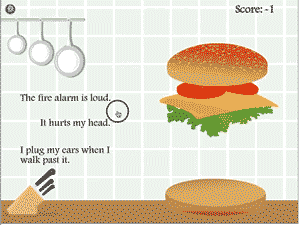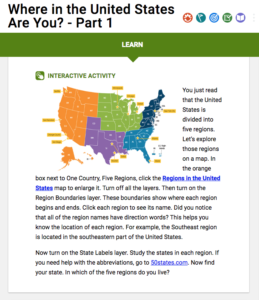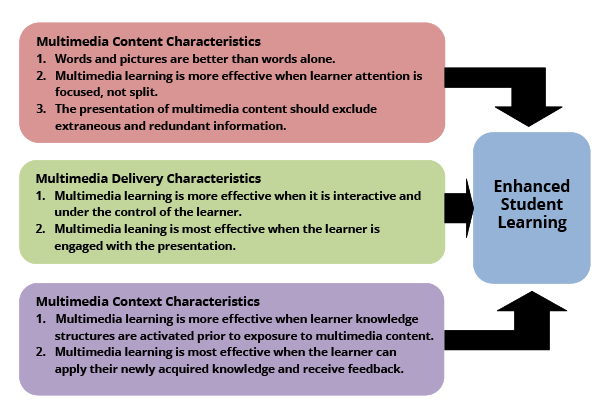Bringing Lessons to Life with Many Modes of Interaction

Our brains are wired to find the combination of words, images, and action intrinsically more interesting than words alone. When multimedia is used effectively in education, learning becomes more engaging. Students become more motivated to work through lessons, and simply learn more.
Careful Curation of Multimedia – The Most Engaging Content for Each Course and Grade
But just because educational content is digital does not make it engaging.
It takes thought, care and knowledge of learning at different grade levels to select only the finest and most compelling educational content. Calvert handles this curation for you, with great care, based on educational principles. Our staff of educators and curriculum specialists evaluate and select content from best-in-class educational providers. We choose the most engaging content to bring lessons to life and engage students. Calvert’s curriculum for 2018/19 takes it to the next level.

In third grade, students learn about the main idea of a story by playing “The Hamburger Game”
When your students step into Calvert’s new learning environment, they’ll find a wealth of multimedia resources carefully woven into three out of four lessons in every subject and grade. This content reinforces skills and lessons learned. Our approach to multimedia is also designed to:
- Motivate students to learn by making lessons more exciting
- Deepen their understanding by requiring them to interact with content in meaningful ways
- Put students and parents in control with self-paced activities
- Boost academic achievement by providing immediate feedback on progress and challenges.
Using Interactive Media to Achieve Active, “Minds-On” Learning
To be clear, this is not a passive, “just watch the video” environment. Instead, we’ve carefully chosen interactive resources that promote active, minds-on learning:
- Virtual labs and simulations that help develop scientific and critical thinking skills
- Interactive maps, historical artifacts, and vintage newsreels that make social studies come alive
- Visual modeling tools and interactive games and quizzes that sharpen math skills and test comprehension
- Interactive templates that help students make sense of what they are reading and writing
- Multimedia tools that make projects more fun, meaningful, and doable — for students and parents.

Just imagine….
- Creating chemical reactions in a virtual lab
- Walking through history with FDR, MLK, or Golda Meir in vintage news clips
- Discovering foreign lands, history, and people in a virtual, interactive atlas of the world
- Exploring the world’s most-loved literature with the click of a mouse.
Summary of Multimedia Learning Principles

Source: BrainPop, Understanding Multimedia Learning: Integrating Multimedia in the K–12 Classroom.
Calvert’s thoughtful approach to multimedia, with many modes of interaction, make this all possible. (Traditional printed textbooks, workbooks etc. can be added to the experience). The result? An engaging, fun and effective learning experience for your student.
